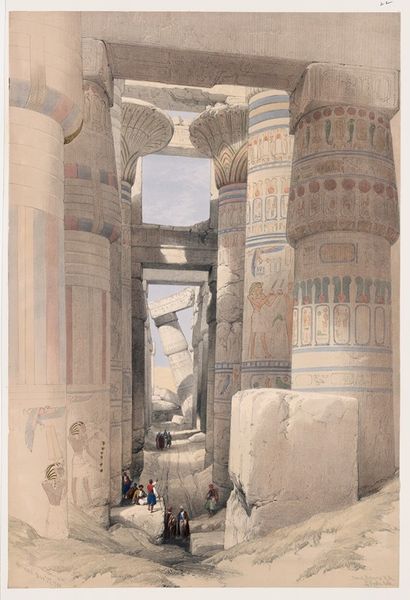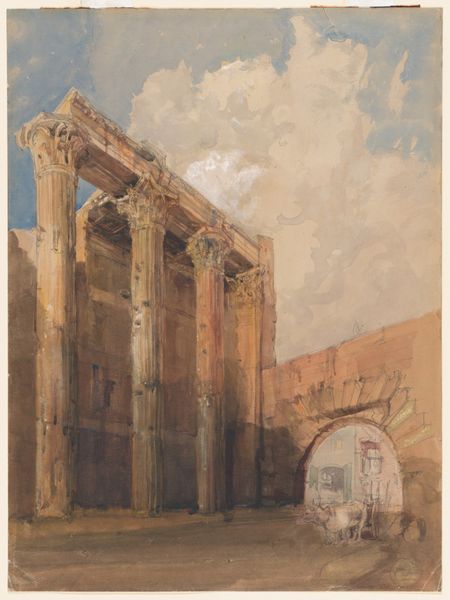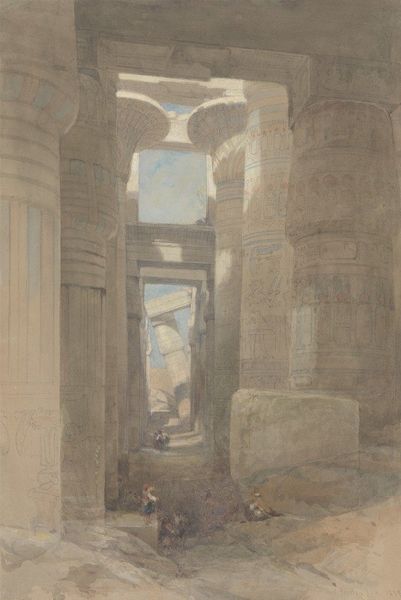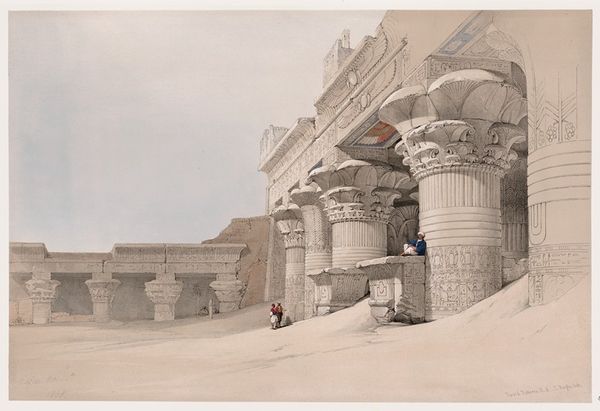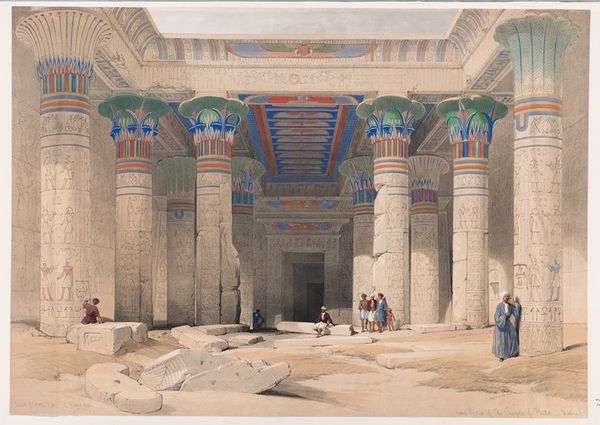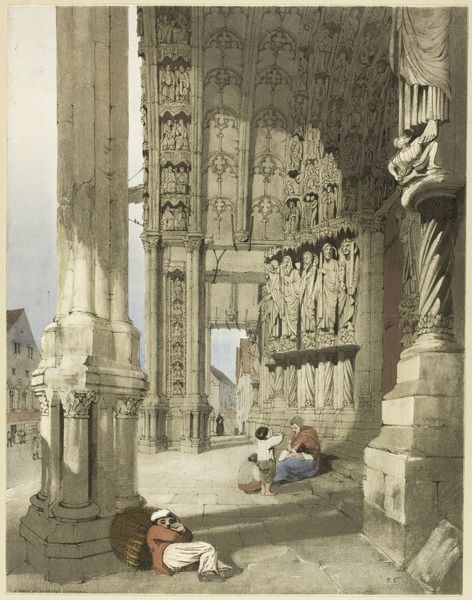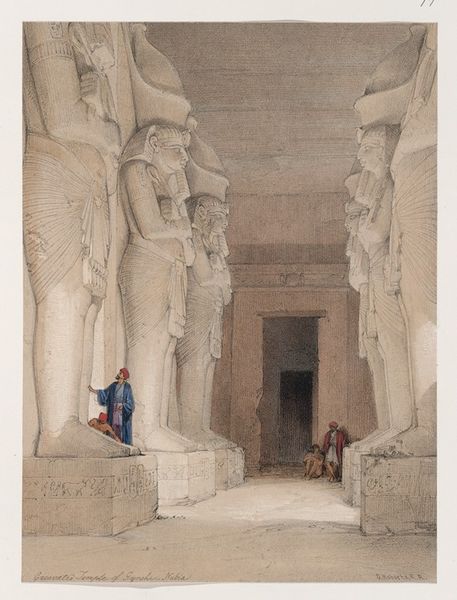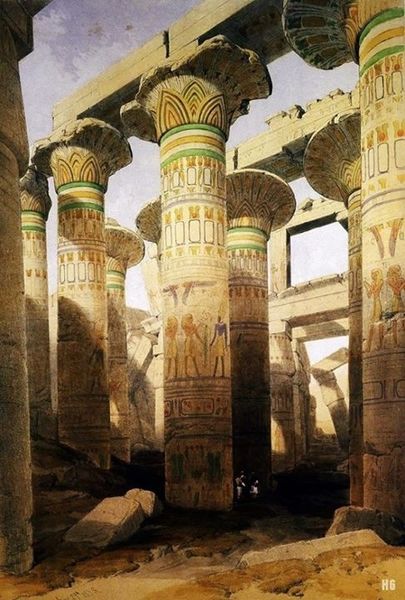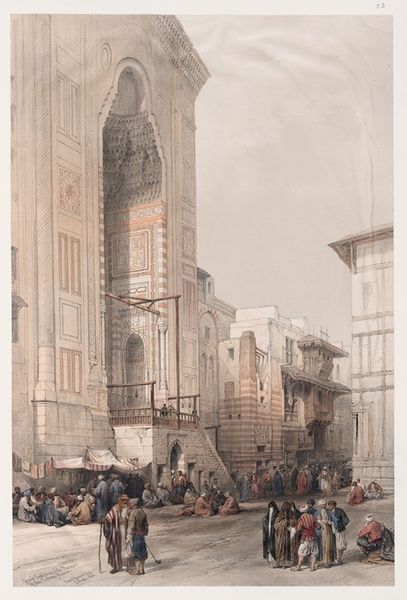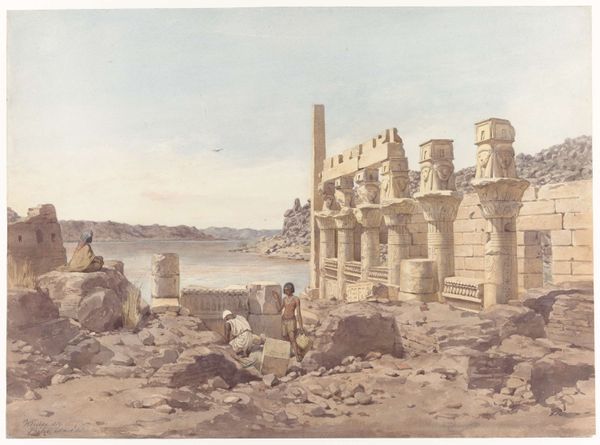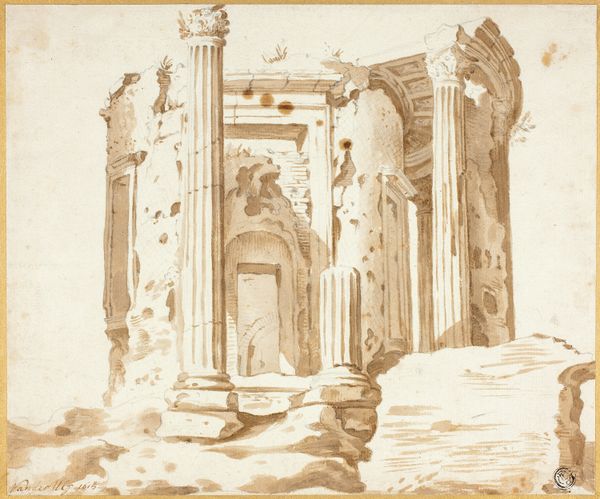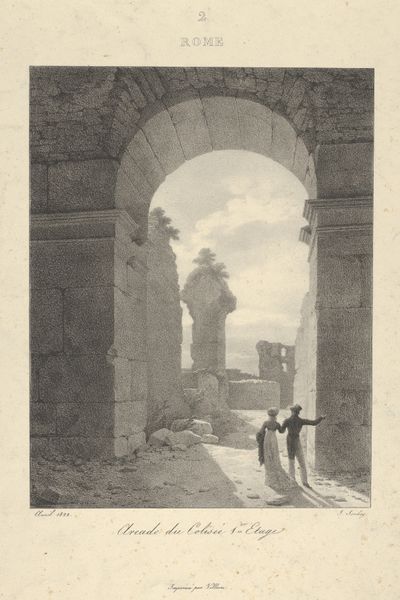
watercolor, architecture
#
sculpture
#
landscape
#
ancient-egyptian-art
#
watercolor
#
ancient-mediterranean
#
watercolor
#
architecture
Copyright: Public Domain: Artvee
Curator: Looking at this artwork, "Thebes. Great Hall at Karnak. Nov. 28, 1838.", a watercolor by David Roberts completed between 1846 and 1849, the first thing that strikes me is its sheer scale. You really get a sense of the monumentality of the place, even in a relatively small watercolor. Editor: The light! It’s as though the temple exhales time, its stones silent witnesses to the ebbs and flows of power. But who built this? For whom did they build it? Curator: Right. We need to consider the context of the creation of such a grand space. Thebes was the religious center of Egypt for many centuries, and Karnak was its largest temple complex, continually added to by successive pharaohs over two thousand years. Enormous resources, materials, and skilled labour would be required for a build of this scale, from quarrying and transport to masonry and decorative art. The power it exudes isn’t just from its physical presence, but its historical position at the centre of social production. Editor: I am thinking about the enslaved individuals who likely contributed their life and effort to its design and creation. Their identities are submerged by time. It speaks volumes about labour exploitation and systemic oppression under hierarchical systems of governance. Curator: And this piece itself reflects 19th-century artistic labour. Roberts’ meticulous application of watercolour attempts to document what was seen, yet in its creation, and as a relatively accessible medium, it’s a piece of art for mass consumption. In turn, the image would have helped shape Western perceptions of the Ancient World. Editor: True. Consider how romantic notions of the 'Orient' functioned to further consolidate power relations with those perceived as ‘other’, feeding into imperial agendas. How much of what we're looking at has been filtered through the prisms of orientalism? How many hands and historical forces contributed to our current image of Thebes? Curator: Indeed. It also begs the question of art's ability to document. There is truth and interpretation, both here. I appreciate seeing these structures not merely as historical artifacts, but also recognizing the materials, means, and conditions that formed them. Editor: And as an act of bearing witness—an exercise in how we are all active participants within the currents of social structures. By looking into this art, we’re peering back in time and into ourselves.
Comments
No comments
Be the first to comment and join the conversation on the ultimate creative platform.
